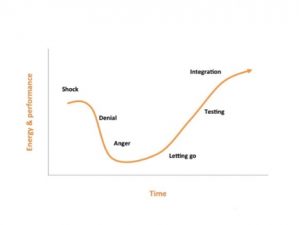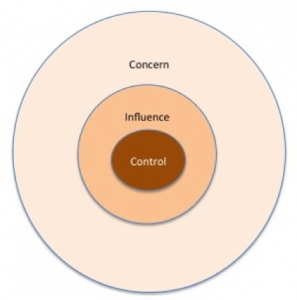5 tips for a positive response to Brexit
Much has been talked about the VUCA environment in which we operate. The Brexit vote last week has raised volatility, uncertainty, complexity and ambiguity to a new level for the UK and global politics, economics and society. We look at how we respond to change and offer five tips to help you, your teams and organisations respond to the post Brexit vote world in a positive way.
Response to change
When I heard the result of the vote early Friday morning I was in shock. It seemed incredible to me that the country had actually voted to leave the EU. Shock turned to anger with the politicians, system and majority of the country who had voted to leave. Over the weekend as I digested the news, I started to hope that there might be a way to change the decision, maybe there would be a second referendum, maybe article 50 won’t be invoked,
maybe the SNP might come to the rescue! And, as I write, a new emotion, acceptance.
Of course, what I went through and describe above is the natural response to change (Kubler-Ross model) as shown in the graphic on the right.
It’s helpful to remind ourselves of this as we might find ourselves “in the grip”, as I did. Sometimes, just understanding how we respond to change can help “normalise” our experience and move through the stages quicker.
Concern, influence and control
I was then reminded of the classic Stephen Covey model of concern and influence; to which I add control, as shown below.
Where do the very many things I’m thinking about sit in this model? I’m certainly concerned about Brexit, but what can I control or influence? Is it helpful for me to spend time thinking about matters over which I have no control or influence…….the answer of course is no!
Thinking about this helped me to focus my efforts and energies in a much more positive way; like reaching out to my clients.
Five tips for a positive response to Brexit
1. Be more conscious of your response to change
Where are you on the change curve? What are you focusing on? How could you use your time to best effect?
2. Look after yourself
Like the pre take-off safety talk, you need to put on your own oxygen mask before you can help others. What is your oxygen mask? It might be exercise, time with friends and family or being mindful. Get good sleep, eat well and follow your own high-energy habits.
3. Show leadership
Those in your teams and organisations will be looking to you for leadership. You need to step up and clarify the situation and set the direction. Yes, you too have your own worries, but being a leader means feeling the fear and still acting. Find the balance between sharing your concerns and finding the positive frame.
4. Keep close to your clients
They will be working through the same issues as you. They will appreciate you reaching out to them and offering to help them think through the options. Make sure you do this in a way that doesn’t come across as being only interested in making a sale. Clients remember advisors who were there when they needed them.
5. Choose your attitude
You can control how you think and behave. Choose how you want to be and what will be most helpful. Consider what outcomes you want and how your behaviour and mind-set influences these.
If you would like help thinking through your own situation and how to respond we are offering a FREE coaching session to be taken before the end of August this year.
Posted in: Leadership, Performance
